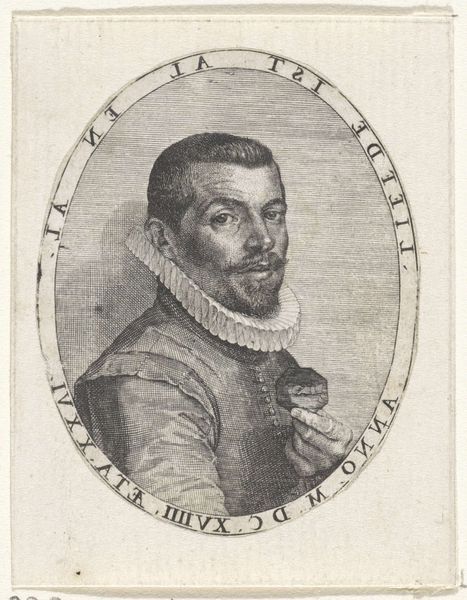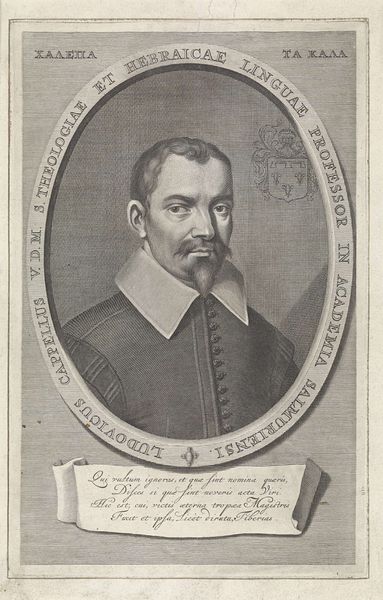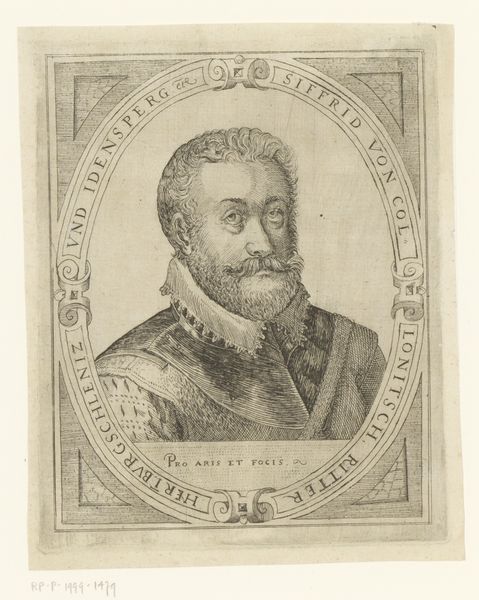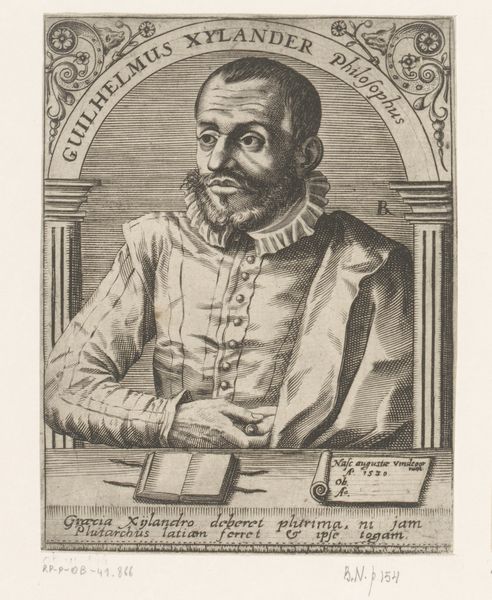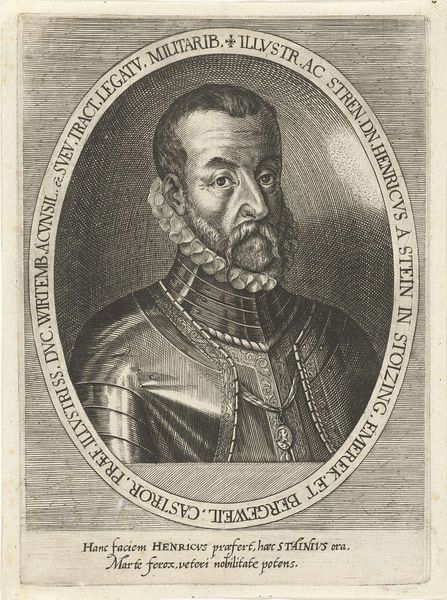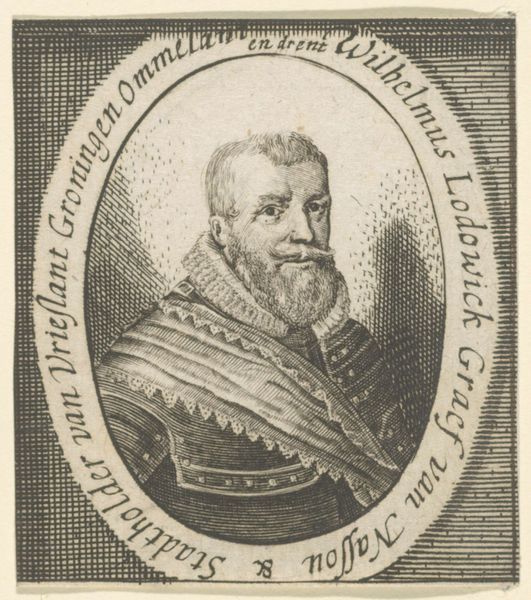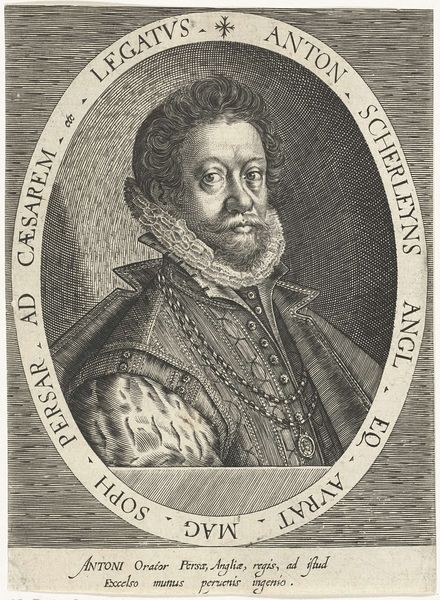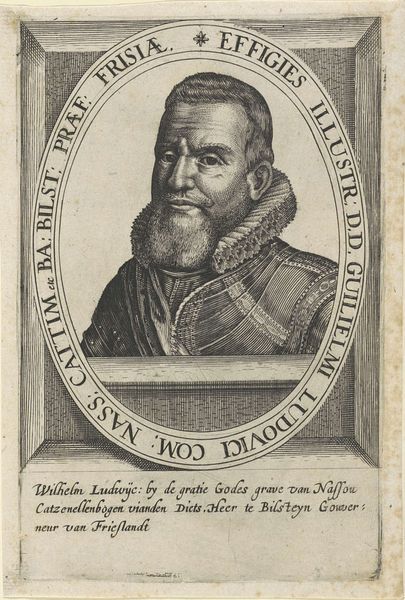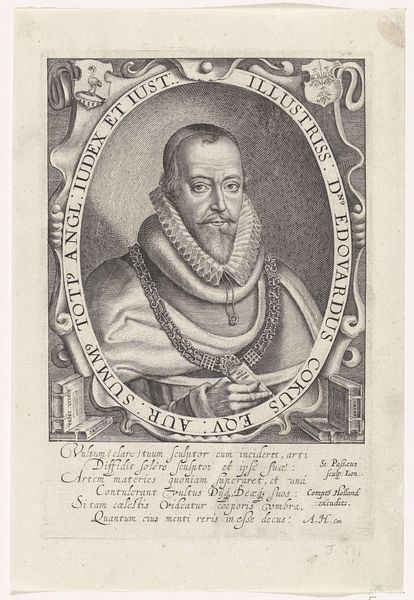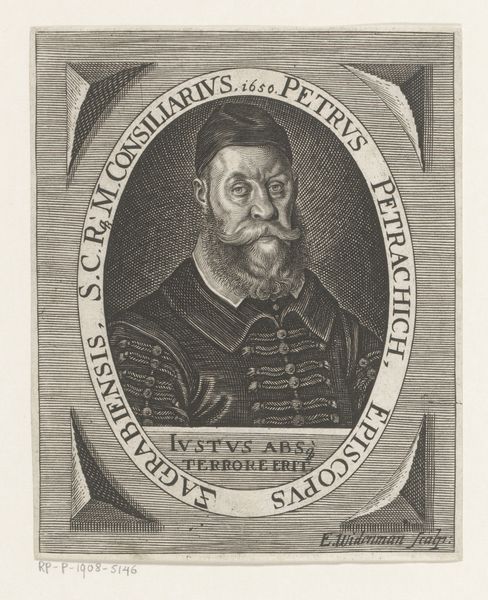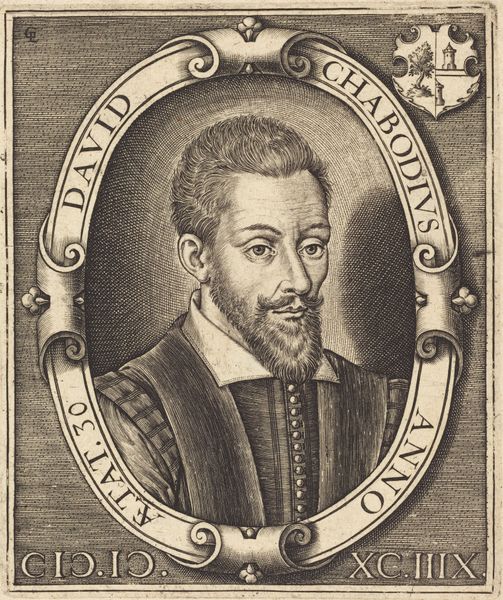
print, engraving
#
portrait
#
baroque
# print
#
northern-renaissance
#
engraving
Dimensions: height 185 mm, width 130 mm
Copyright: Rijks Museum: Open Domain
Editor: Here we have "Portret van Georg graaf van Basta" from around 1600 to 1604, an engraving by Dominicus Custos. It's so detailed for a print! I'm immediately drawn to the face, that almost melancholic expression. What do you see in this piece? Curator: Indeed! What strikes me is how Custos uses the visual language of power and authority, so typical of the Baroque era, and overlays it with something else. This portrait is more than just a record; it’s a cultural artifact, reflecting Georg graaf van Basta's identity and how he wanted to be perceived. Notice how the text framing the image literally encircles and defines him. Does this circular declaration enhance or perhaps subtly imprison him? Editor: That's interesting, I hadn't thought of the inscription as a form of constraint. So you're saying the symbols are intentionally constructed to convey meaning beyond just appearance? Curator: Absolutely! Look closely at the armor; it's not just protection. It's a symbol of his military achievements, his strength, and his preparedness for war. Consider, too, the gaze. He looks directly out at us, connecting, yet also maintaining a distance. The engraver's skill lies in capturing these subtleties – these unspoken cultural messages – through symbolic imagery. Are we meant to admire, to fear, or perhaps even pity him? Editor: Wow, I hadn't picked up on all that. Seeing the portrait now, it feels less like a simple image and more like a carefully constructed performance of identity. Curator: Exactly! The visual elements are deliberate, each carrying a historical and cultural weight, a reflection of a specific moment and a specific man trying to cement his place in history. A man of war forever captured inside of a circle. Editor: I will never look at a portrait the same way again. Thanks for this deeper understanding.
Comments
No comments
Be the first to comment and join the conversation on the ultimate creative platform.
